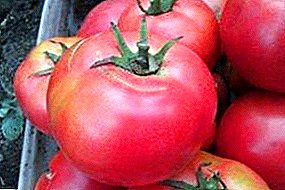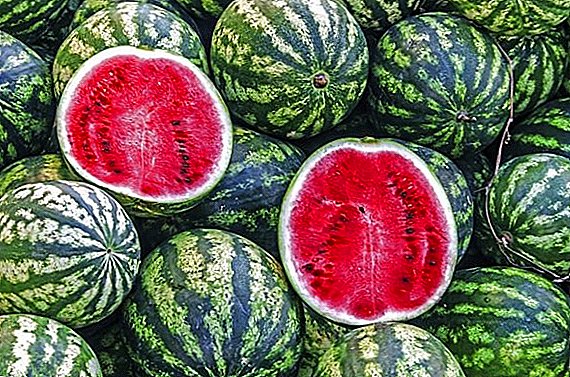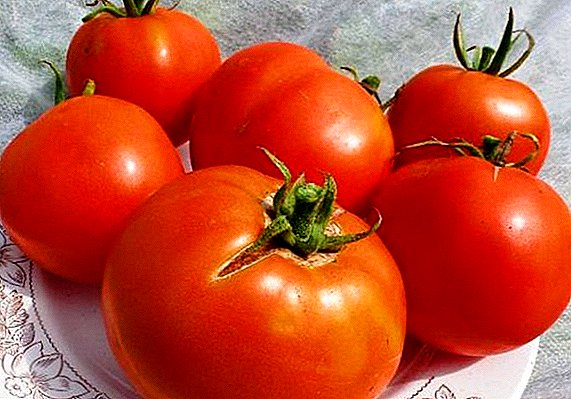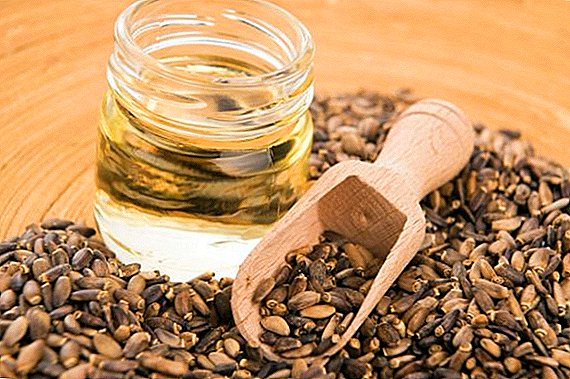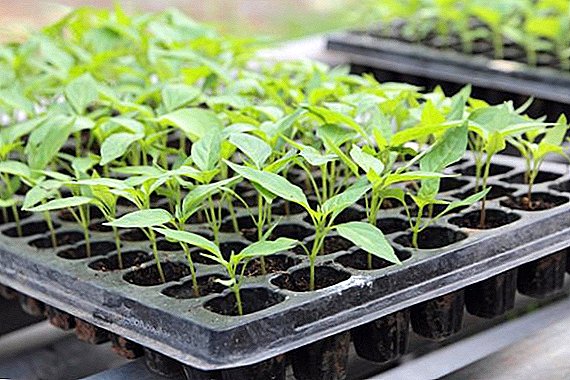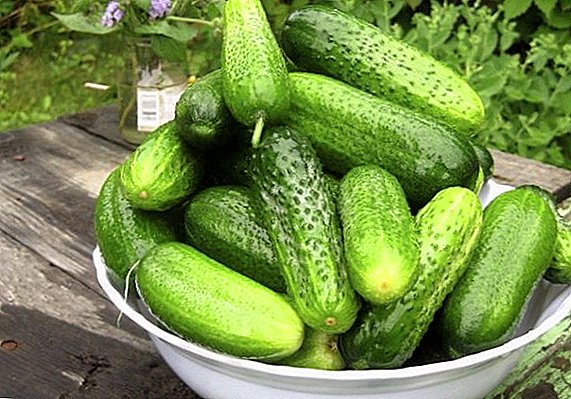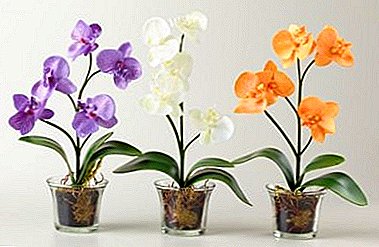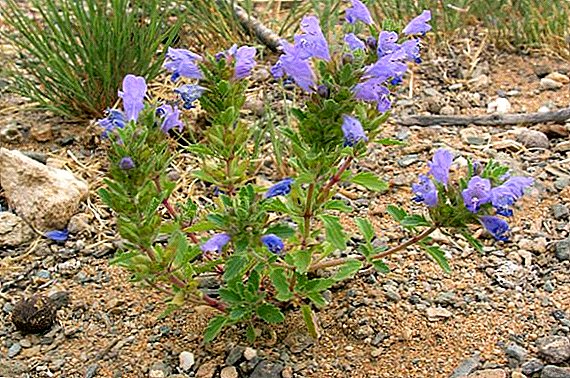 Grass snakehead has long been known for its beneficial properties. In addition, her pleasant lemon scent served as a pretext for applying it in the production of cosmetics and for imparting new taste sensations to the culinary business. This article discusses aspects of the use of the serpentine and the technology of its cultivation.
Grass snakehead has long been known for its beneficial properties. In addition, her pleasant lemon scent served as a pretext for applying it in the production of cosmetics and for imparting new taste sensations to the culinary business. This article discusses aspects of the use of the serpentine and the technology of its cultivation.
Description
It is no coincidence that a snakehead is called that - its blue (reddish-purple) flowers look like a snake's head with its mouth wide open. This is mainly a perennial plant that grows to 50-70 cm in height. On the tetrahedral stem are oblong leaves with notched edges. The top is crowned with inflorescence. It begins to bloom from the lower inflorescences. The flowering period is in July and August. The first seeds appear in early September. They have a brown color, do not have a rest period, which leads to the germination of some of them in the fall.  The serpentine is common everywhere - it is a non-capricious plant both in terms of soil and in climatic differences. It is widely distributed both in Eurasia and in both Americas (in subtropical and temperate climatic zones). The serpentine head is a honey plant, it has a strongly pronounced lemon scent that scares off some insects, and attracts bees.
The serpentine is common everywhere - it is a non-capricious plant both in terms of soil and in climatic differences. It is widely distributed both in Eurasia and in both Americas (in subtropical and temperate climatic zones). The serpentine head is a honey plant, it has a strongly pronounced lemon scent that scares off some insects, and attracts bees.
Did you know? Some gardeners plant a serpentine in beds and vegetable gardens on one seedling in different areas. For what? Just its rich smell can scare off some insect pests.
Kinds
There are more than four dozen species of serpentine.
Learn more about such medicinal herbs as: whitehead, yarutka, walker, onosma, bitter creeping, centaury, astragalus, bonfire, bedworm, sedge, book, pike, yasnotka and zubrovka.Most common:
- Moldovan snakehead is an undemanding annual plant that can comfortably grow in both heat and cold. It has a long flowering period: from mid-summer to mid-autumn. The flowers are white, blue and purple;
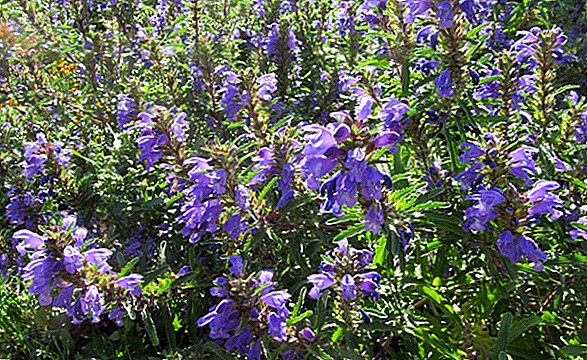
- large-flowered snakehead - a perennial plant, undemanding to the level of illumination. Likes well-fertilized, loose soil. Flowers are larger than in other species, mostly blue;

- Foreign snakehead - a perennial plant, distributed in Central Asia and parts of East Asia, Siberia. Stony soil is preferable. The flowers are purple, rarely white, blue and pink;
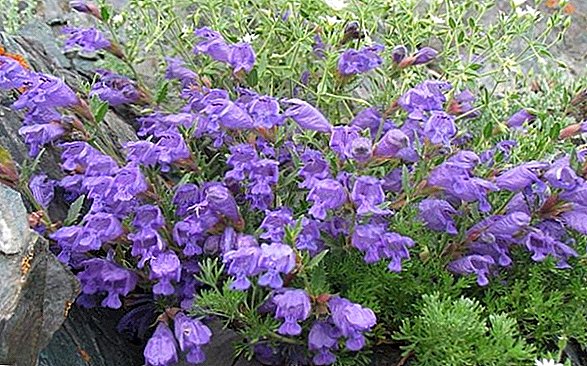
- Ryusch snakehead grows in large areas: Siberia, Central Asia, Eastern Europe. It grows comfortably both in steppe soil and in rocky mountain soil. It has spiciform inflorescence with predominantly blue flowers.
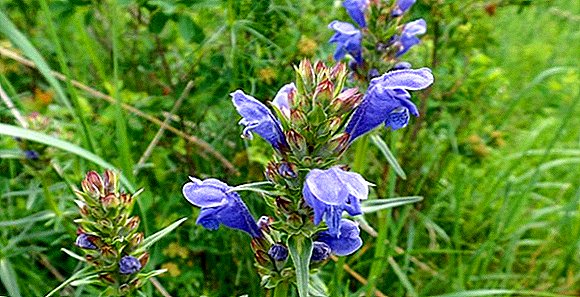
Composition
The composition of this plant contains many beneficial trace elements, tannins and vitamins, flavonoids. In the dried snakehead, the percentage of nutrients is as follows:
- ash - 10%;
- protein - 2.2%;
- protein nitrogen - 0.3%;
- essential oils - 0.28%.
A lot of beneficial trace elements contains dried rosehip, plum and apple.Chemical components as a percentage look like this:
- polysaccharides - 9.2%;
- phenolic acids - 5.1%;
- flavonoids - 1.28%;
- essential oils - 0.43%.

Did you know? The smell of this plant lures bees, so beekeepers rubbing leaves with its leaves to populate a swarm of bees in a new hive.
Beneficial features
Useful properties of this fragrant grass are known to people for more than a hundred years. It has a calming, tonic effect, helps with pain caused by problems with teeth or migraine, improves appetite, is a powerful antiseptic. And this herb is actively used in other areas of human activity. In cooking, used as a spice or natural citrus flavor. In cosmetology used in the manufacture of perfumes, massage oil, soap and other things.
Migraine is best treated with periwinkle, citronella oil, lavender and lovage.
Harm and contraindications
During the use of this plant was not found contraindications, except for personal intolerance and allergic reactions to the substances contained in it. Pregnant women and children up to one year of use are not prohibited, but it is worth treating them carefully - take them in small portions and monitor the body's response. 
Application
The plant has been used by humans for a long time, so it has found wide application in various fields. The main areas of application are cooking, medicine and cosmetology.
In cooking
Due to the essential oils and the pronounced aroma of lemon, this fragrant herb has found wide application in cooking. It is used in the confectionery business, added to drinks, soups, salads and main dishes, as well as marinades. Used in fresh and dried form. The leaves have the greatest aroma, but flowers are also used. As a spice, the plant is added to fish dishes and soups. It creates a piquant touch in fresh salads. An excellent marinade for chicken is obtained by combining a serpentine, tarragon, yarrow and wormwood.
Important! Use as a spice is cautious, as it has a strong smell and can kill other flavors of the dish.
In medicine
The plant has a positive effect on the body with problems with heart rhythm and gastrointestinal tract, with colds, diseases of the teeth. Used for external use (as compresses and baths for rheumatism, bruises, toothache) and for internal use (as tinctures and decoctions for colds, neuralgia, migraines, and problems with appetite). Most of the time, traditional medicine uses plant leaves, but flowers, stems, roots, and seeds also find their use. The serpentine tea has an immunostimulating effect. During colds, brew boiling water for 2-3 tablespoons of the serpentine, let it brew for 10-15 minutes, add honey and drink it hot.
In cosmetology
For cosmetic purposes has found extensive use of the essential oil of this plant. Main areas of application: massage oils, soap making and perfumery. This is due not only to the subtle rich aroma, but also to the positive effect of this oil on the human body.
Growing up
Snakehead - unpretentious plant, so planting it on the site will not cause much trouble. Planting seeds carried out in early May. Pre-prepared grooves (1-2 cm deep) are filled with water. The interrow distance should be kept in the order of 40-45 cm. It is worth paying attention to the fact that during planting and after it there is no solid earth crust - this prevents germination. After a couple of weeks should appear the first shoots.
Important! Do not soak the seeds, they stick together, and they can not be planted.The soil for planting should be warm enough. The first couple of weeks after germination should carefully care for the sprouts: water, weed, loosen the ground near them. After 2.5 months, the first flowers will appear. From this point on, the plant can not be abundantly watered. It is recommended to collect seeds after the last flower on the plant has bloomed. Cutting the peduncle, is to send it to dry in a dark, warm and well-ventilated room. Snakehead during flowering looks quite impressive, so you can create with him in a flowerbed various flower arrangements. This fragrant herb has many beneficial properties, therefore it is actively used by humans. Due to its unpretentiousness and beauty, the flower is suitable for cultivation in the garden plots, simultaneously performing several functions: jewelry, medicines, spices and a cosmetic additive.






